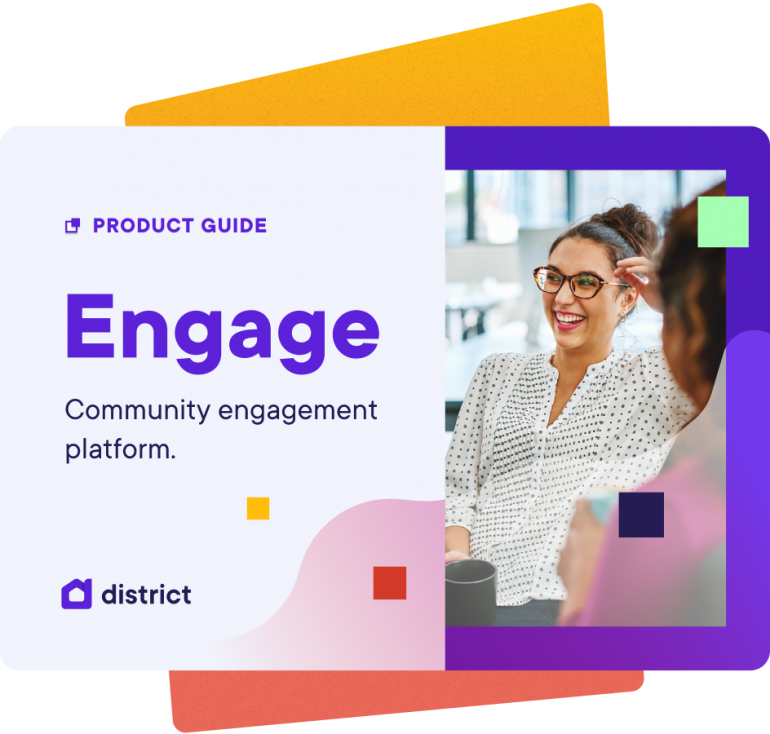How to Foster Dialogue and Build Trust
Community engagement is key to designing policy and projects that better respond to the community’s needs. But it’s unrealistic to expect that all engagements will run smoothly. Indeed, community engagement practitioners need to be prepared for dealing with issues that are divisive and controversial.
Even an issue that seems relatively minor, such as the implementation of parking restrictions, or a change to a traffic roundabout might be controversial to the residents that have to live with the consequences of that decision.
So how can community engagement practitioners foster dialogue and build trust, even while navigating controversial issues?
Transparency is critical for building trust
From the outset, be upfront and honest about the project, its goals, timelines and the projected outcomes. Set clear expectations about what the community will and won’t be able to impact, and how community feedback will be used to inform decision making.
Don’t be tempted to downplay any potential negative issues. This risks the relationship between the community and project organisers and could undermine the feeling of trust required for dialogue down the track.
Be accessible and inclusive
Make sure your community engagement project is accessible to all who want to participate in the discussion, especially those from underrepresented groups.
If you are using a digital community engagement platform like District Engage, make sure your content is user-friendly, uses inclusive language, and is available in multiple languages. Employ a variety of digital and face-to-face engagement tools to ensure a wide cross section of the community can participate.
Of course, including a diversity of viewpoints also opens up the risk for conflict. It is important that the engagement process takes time to understand these issues and respond appropriately.
Mitigate risks
Any community engagement project should have a risk management strategy built in. Risks can range from confusion and unrealistic expectations; a sense of fatigue about consultation overload; community distrust; the spread of misinformation; or the difficulties getting representation of a diverse range of views.
While these risks must be carefully managed by experienced community engagement practitioners, the basic fundamentals of good engagement practice offer a great starting point:
- Be honest and clear about the engagement project
- Provide sufficient time for community feedback
- Build relationships with the community
- Be inclusive and, if necessary, adapt your strategy to ensure representation
- Listen and adapt your consultation where possible
- Share feedback
The importance of listening
It’s important to create opportunities for dialogue, so create safe spaces where people feel comfortable to share their thoughts and ideas about the project. Consider public meetings, online forums, or discussion threads on your project website.
Be willing to listen to any concerns the community might raise. It’s one thing to let people speak, but it's just as important to listen properly to what they have to say. Be open to new ideas and different perspectives, especially when dealing with controversial issues.
If they feel heard and understood, the community will be empowered to feel a sense of ownership over the issue. This will make it easier to come to a shared understanding of the issue and make it easier to work on solutions.
Address community concerns
Be prepared to address community concerns about controversial projects. Respond to comments and questions in a timely manner and provide updates on your project website highlighting any steps you’re taking to address the issues raised by the community.
The power of reporting
One of the benefits of an engagement platform like District Engage is easy access to instant reporting and feedback. In navigating through a controversial project, it’s helpful to be able to share those reports with stakeholders in order to gauge community sentiment. Perhaps that controversial new roundabout will help divert heavy traffic away from the local school? Being able to share genuine insights about your project can help build community buy-in.
For maximum transparency, offer community stakeholders access to raw data, and let them do their own research. This gives power and ownership to the community, and, combined with local insights and experience, can help shape positive outcomes for the project - and the community.
Transparent reporting helps to build trust and understanding because it prioritizes the feedback of the community, and illustrates to them that their voices are heard. While the outcomes might not always go the way the community wants, it’s important that they feel heard, and they know their concerns have been genuinely addressed.
Focus on solutions
Ultimately, community engagement is about finding solutions to the issues that matter to the community. Building a culture of respectful dialogue, open and honest transparency, and a commitment to keep the public informed, will help establish a culture of trust and engagement. Working with the community in a collaborative way will help you identify solutions that meet the needs of everyone involved.
Looking for a community engagement platform that helps to foster open and honest transparency engagement? Learn more about our platform, District Engage




